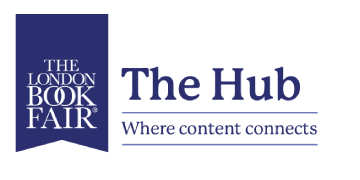As parks and gardens turned brown across the UK and Waterstones stores cleverly displayed Penelope Lively’s novel Heat Wave, so the mercury on the Nielsen print sales thermometer (this analogy beginning to crumble already – it’s the heat) continued to rise too, and on both sides of the Atlantic.
In the UK, print sales for the first half of the year were up 0.8% by volume and in the US the increase was 2%, as measured by those outlets that report to NPD BookScan. Non-fiction for Children and Young Adults contributed to healthy figures for Children’s books overall on both sides of the Atlantic too. In the UK Children’s and YA non-fiction increased by 10.6% in value in the first half of the year, while in the US print sales in juvenile non-fiction increased in volume by 7%.
The resilience of the children’s market has been much mentioned in the last couple of years. One theory for its health was put forward at the Readmagine (sic) Conference in Madrid which brought together European publishers and retailers. Stefano Mauri, Chairman and CEO of Gruppo editorial Mauri Spagnol, Italy’s second largest publisher, observed: “In every country in which Nielsen has data from publishers, the only genre that’s growing is children’s books. And why is that? In my opinion, booksellers have smaller shelves for fiction – because part of that is sold as ebooks [largely taken by Amazon] – and they widen the share for children’s books because you want to open up a book if you’re to give it to a child, to see what’s inside. And the child loves a tangible pleasure. You cannot substitute that with an ebook.”
With high level summits taking place on the political stage, publishing had its own version in the series of meetings of the Standard Committee on Copyright and Related Rights, hosted by the World Intellectual Property Association at its headquarters in Geneva. The International Publishers Association (IPA) was there to speak for publishers, with its CEO Michiel Kolman making clear the industry’s stance on the sensitive issue of copyright exemptions and limitations in educational publishing. In essence, the IPA is opposed to any blanket, one-size fits all, raft of international regulations on copyright exceptions. Rather, it favours a devolved approach. Kolman talked about “support for local efforts to achieve balanced copyright regimes and practical solutions – rather than developing new international norms.”
If this all sounds too dry, the IPA’s Director of Policy and General Counsel William Boyes, observed in a blog post that many delegates at the meeting asked for educational materials to be made copyright free. This was presented, he said, as a solution to several learning and development goals. While these goals are noble – and shared by publishers and authors – he said the solution wouldn’t work. “Those now seeking to exclude education from copyright need to answer the following question. When the world has finished reading for free all of the books and journals that exist today, who will pay for the production, curation and dissemination of the books and journals of tomorrow?”
Oren Teicher, CEO of the American Booksellers Association, wrote a touching letter on the ABA’s website to mark the US Supreme Court’s decision that all retailers – both bricks and mortar and online – must collect sales tax for online orders. Hitherto, online retailers had been exempt. Noting that the ABA had been making the argument for more than 20 years, he said: ‘It’s important to acknowledge – and to celebrate – this outstanding collective triumph for indie bookstores, Main Street businesses, and local communities.’
Still with the US, MTA Metro-North Railroad’s partnership with Penguin Random House in which free ‘commuter length’ extracts of titles can be downloaded in the station for the journey home is an admirable initiative. But some rail enthusiasts may be up in arms. Part of the promotion’s aim is “to bring literature celebrating New York authors, New York City, and Grand Central Terminal itself directly to commuters and visitors”.
Here’s part of the extract from Paula Hawkins’ Girl on the Train, with some italics added: ‘Someone in the seat behind me gives a sigh of helpless irritation; the 8:04 slow train from Ashbury to Euston can test the patience of the most seasoned commuter.’ Yes, the film may well have trundled in and out of Grand Central, as it were, but the book is manifestly set in the land of leaves on the line and the wrong kind of snow.

Roger Tagholm writes our Snapshot of the Week.

